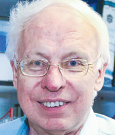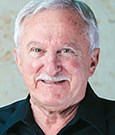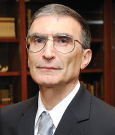The Nobel Prize in Chemistry 2015 recipients were recently announced. They are Tomas Lindahl, PhD, Paul Modrich, PhD, and Aziz Sancar, PhD, for having mapped, at a molecular level, how cells repair damaged DNA and safeguard the genetic information. Their work has provided fundamental knowledge of how living cells function and is used for the development of new cancer treatments.
Each day, ultraviolet (UV) radiation, free radicals, and other carcinogenic substances damage our DNA, but even without such external attacks, a DNA molecule is inherently unstable. Thousands of spontaneous changes to a cell’s genome occur on a daily basis. Defects can also arise when DNA is copied during cell division, a process that occurs several million times every day in the human body. The reason our genetic material does not disintegrate into complete chemical chaos is that a host of molecular systems continuously monitor and repair DNA. The Nobel Prize in Chemistry 2015 awards these three pioneering scientists, who have mapped how several of these repair systems function at a detailed molecular level.
Exceptional Findings
In the early 1970s, scientists believed that DNA was an extremely stable molecule, but Dr. Lindahl demonstrated that DNA decays at a rate that ought to have made the development of life on Earth impossible. This insight led him to discover molecular machinery, base excision repair, which constantly counteracts the collapse of our DNA. Dr. Lindahl is Emeritus Group Leader at the Francis Crick Institute and Emeritus Director of Cancer Research UK at the Clare Hall Laboratory. He received his doctorate from the Karolinska Institutet.
Dr. Modrich has demonstrated how the cell corrects errors that occur when DNA is replicated during cell division. This mechanism, mismatch repair, reduces the error frequency during DNA replication by about a thousandfold. Congenital defects in mismatch repair are known, for example, to cause a hereditary variant of colon cancer.
Dr. Modrich is a Howard Hughes Institute Investigator and the James B. Duke Professor of Biochemistry at Duke University School of Medicine. He received his doctorate from Stanford University.
Dr. Sancar has mapped nucleotide excision repair, the mechanism that cells use to repair UV damage to DNA. People born with defects in this repair system will develop skin cancer if they are exposed to sunlight. The cell also utilizes nucleotide excision repair to correct defects caused by mutagenic substances, among other things.
Dr. Sancar is the Sarah Graham Kenan Professor of Biochemistry and Biophysics at the University of North Carolina School of Medicine. He received his doctorate from the University of Texas, Dallas. ■




